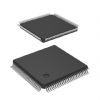GS8180D18D: Features: • Simultaneous Read and Write SigmaQuad™ Interface• JEDEC-standard pinout and package• Dual Double Data Rate interface• Byte Write controls sampled at data-in...
floor Price/Ceiling Price
- Part Number:
- GS8180D18D
- Supply Ability:
- 5000
Price Break
- Qty
- 1~5000
- Unit Price
- Negotiable
- Processing time
- 15 Days
SeekIC Buyer Protection PLUS - newly updated for 2013!
- Escrow Protection.
- Guaranteed refunds.
- Secure payments.
- Learn more >>
Month Sales
268 Transactions
Payment Methods
All payment methods are secure and covered by SeekIC Buyer Protection PLUS.

 GS8180D18D Data Sheet
GS8180D18D Data Sheet






